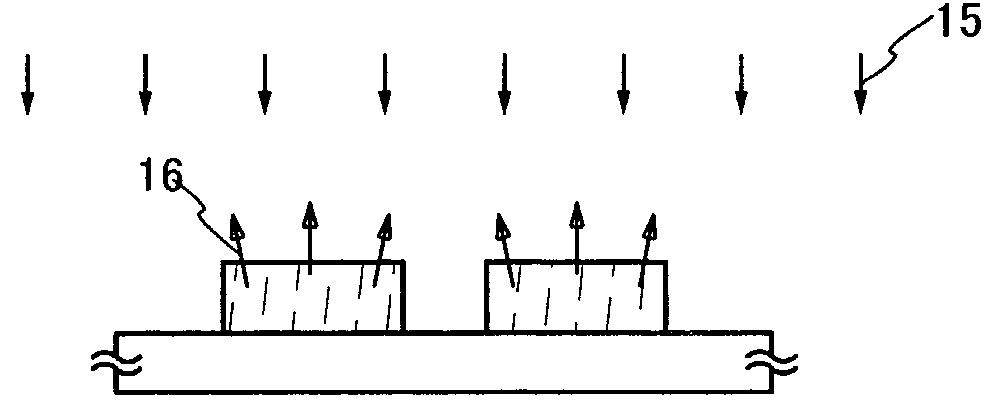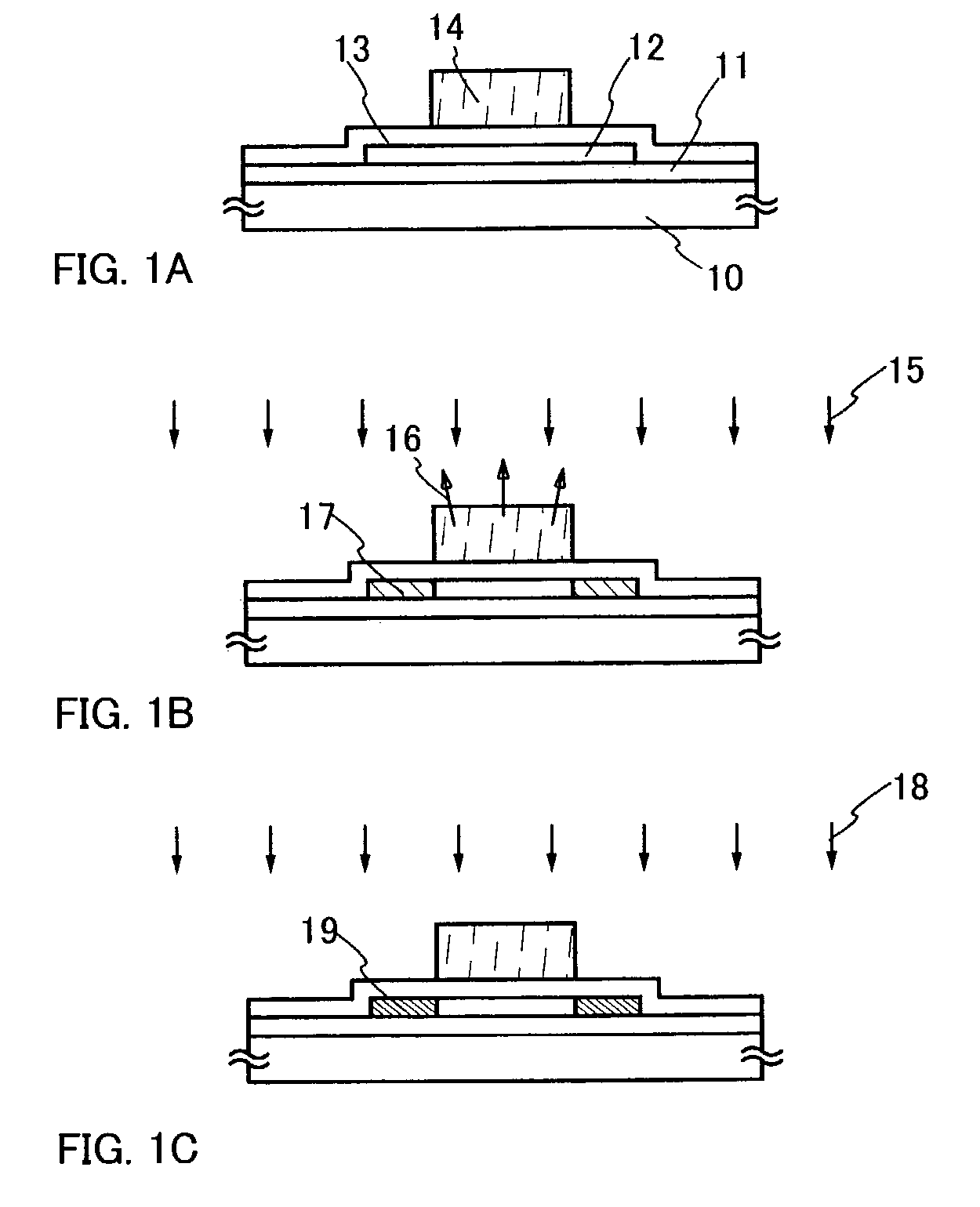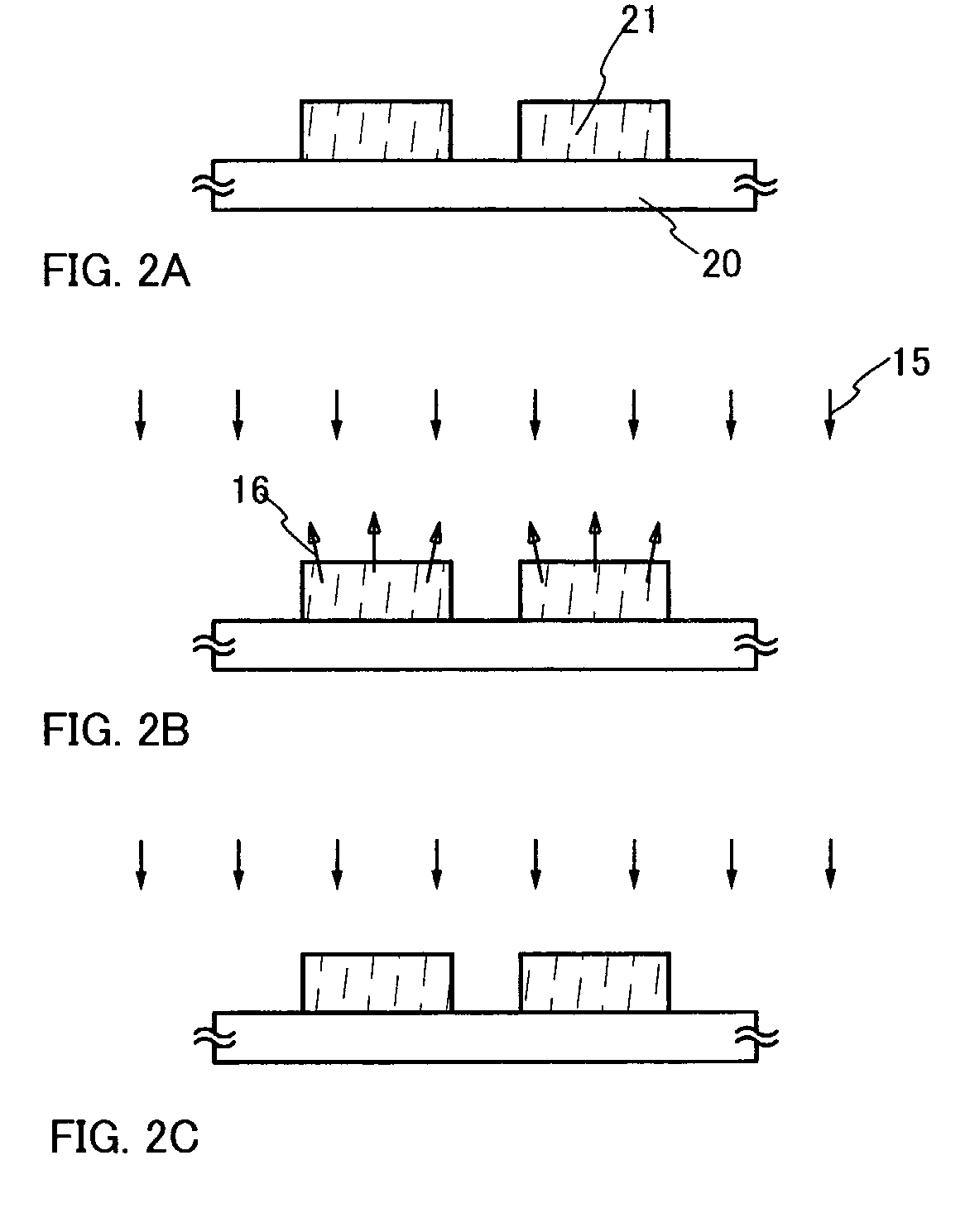Method of introducing ion and method of manufacturing semiconductor device
a technology of semiconductor devices and ionization, which is applied in the direction of semiconductor devices, basic electric elements, electrical appliances, etc., can solve the problems of difficult to completely remove resists, uneven quantity of ion to be introduced in semiconductor devices, and deterioration of semiconductor properties, so as to reduce or prevent the introduction of components, reduce the weight of the target, and improve the effect of durability
- Summary
- Abstract
- Description
- Claims
- Application Information
AI Technical Summary
Benefits of technology
Problems solved by technology
Method used
Image
Examples
example 1
[0044]Embodiments according to the present invention are described in detail with reference to FIGS. 1A to 1C.
[0045]FIG. 1A shows an example of a semiconductor on which a resist is partially formed. An underlying insulating film 11 is formed on a substrate 10 and, then, a semiconductor film 12 is formed on the thus-formed underlying insulating film 11 and, thereafter, a resist 14 is formed on the thus-formed semiconductor film 12 via an insulating film 13. It goes without saying that the resist 14 may be formed on the semiconductor film 12 without forming the insulating film 13 therebetween.
[0046]A first introduction of a first ion 15 into the semiconductor on which the resist 14 is thus formed is performed by a first acceleration voltage. In such first introduction processing, an apparatus such as an ion-doping apparatus or an ion implantation apparatus may be used and, also, a known material gas (for example, PH3, B2H6) may be used as a material gas. Further, an inert gas which wi...
example 2
[0053]In the present Example, described is a result obtained by observing changes of pressure inside a treatment chamber when a resist was formed on a substrate and, then, a first introduction of an ion and a second introduction of an ion were performed. Further, in the Example, an experiment was conducted while a condition of a first acceleration voltage was fluctuated at the time of the first introduction.
[0054]FIGS. 2A to 2C show an example in which a resist 21 is partially formed on a substrate 20. In this example, a glass substrate was used as the substrate 20 and a novolac resin was used as the resist 21.
[0055]A first introduction of the ion was performed into the substrate on which the resist 21 was thus formed. Such introduction processing was performed for 6 minutes by using an ion doping apparatus and B2H6 as a material gas. Further, 3 types of acceleration voltages, that is, 10 kV, 40 kV, and 90 kV, were adopted. Changes of the pressure inside the treatment chamber under ...
example 3
[0061]In the present Example, described is a result obtained by observing changes of pressure inside a treatment chamber when a resist was formed on a substrate and, then, a first introduction of an ion and a second introduction of an ion were performed. Further, in the Example, a condition of a second acceleration voltage was fluctuated at the time of the second introduction.
[0062]FIGS. 2A to 2C show an example in which a resist 21 is partially formed on a substrate 20. In this example, a glass substrate was used as the substrate 20 and a novolac resin was used as the resist 21.
[0063]A first introduction of the ion was performed into the substrate on which the resist 21 was thus formed. Such introduction processing was performed for 6 minutes by using an ion doping apparatus and B2H6 as a material gas. Further, a radio frequency supply of 5 W and an acceleration voltage of 90 kV were adopted. Changes of the pressure inside the treatment chamber under the above-described conditions ...
PUM
 Login to View More
Login to View More Abstract
Description
Claims
Application Information
 Login to View More
Login to View More - R&D
- Intellectual Property
- Life Sciences
- Materials
- Tech Scout
- Unparalleled Data Quality
- Higher Quality Content
- 60% Fewer Hallucinations
Browse by: Latest US Patents, China's latest patents, Technical Efficacy Thesaurus, Application Domain, Technology Topic, Popular Technical Reports.
© 2025 PatSnap. All rights reserved.Legal|Privacy policy|Modern Slavery Act Transparency Statement|Sitemap|About US| Contact US: help@patsnap.com



